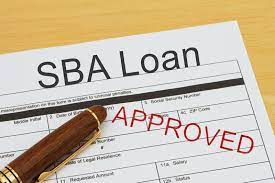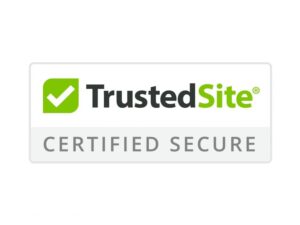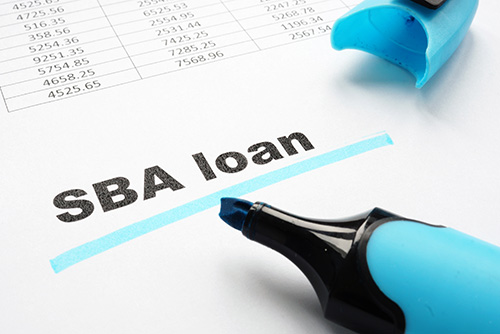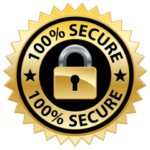
How Do SBA Loans Work?
U.S. Small Business Administration (SBA)
SBA 7(a) Eligibility Requirements:
One must be officially registered as a for-profit business, and one must be operating legally.
As the business owner, you can’t be on the parole of the business
Your business must have fewer than 500 employees, and less than $7.5 million dollars in revenue on average each year for the past three years.
SBA loans are one of the most popular methods of finance available to small business owners but it is important to understand that the SBA is never a direct lender and does not actually originate loans. Instead, the SBA provides loan guarantees for designated and approved lending institutions who will then provide financing for small business owners with what is termed an SBA credit enhancement.
Created in 1953 A.D., the U.S. Small Business Administration (SBA) assists small business owners and entrepreneurs in their pursuit of the American dream.
The SBA is the only cabinet-level federal agency fully dedicated to small business and provides counseling, capital, and contracting expertise as the nation’s primary federal resource and voice for small businesses.
Interest Rates:
Interest charged for SBA loans is lower than other loans, depending on your creditworthiness and how qualified you are for the loan.
Loan Amounts:
SBA will allow you access to as high as $5.5 million dollars with the 7(a) Program, which is really possible depending on your qualifications.
The SBA guarantees loans of up to 85% of amounts borrowed up to $150,000 dollars and guarantees of up to 75% for amounts in excess of $150,000 dollars threshold with maximum loan amounts of up to $5,000,000 dollars.
The Microloan program provides loans up to $50,000 dollars to help small businesses and certain not-for-profit childcare centers to start up and expand.
The average microloan provided through this unique program is about $13,000 dollars.
As you can realize, these SBA loans do require a down payment, worth 10% to 20% of the total amount you’re borrowing.
But the SBA offers several no money down small business loan programs, including the SBA Microloan.
However, you’ll need some form of collateral to qualify for this type of loan.
Small Business Administration loan programs are drafted in agreement between lenders and SBA agencies.
Borrowers use these programs when looking for lenders for their small businesses.
Lenders appreciate SBA loan programs because the SBA shoulders some of the risk for the lender by guaranteeing a portion of the loan amount. Because of that guarantee, lenders are able to offer more flexible payment terms and lower interest rates than most small businesses would otherwise be able to obtain.
SBA loans and SBA Express loans are a useful option for many SMBs, Small and Medium Businesses but they do have several things that you should want to consider before applying.
Here are some things to think about before you make a decision
Designed Especially for Small Business SBA loans and SBA Express loans target small businesses.
Unlike traditional bank loans, SBA loans are aimed specifically at SMBs.
SBA loans and SBA Express loans can be used for a wide range of expenses. One can use these loans for “most” business purposes, including start-up, expansion, equipment purchases, working capital, inventory or real estate purchases.
SBA loans are secured, SBA agencies guarantee a percentage of the loan amount to the lender. This reduces one’s risk yet in cases where you don’t pay what you owe, the bank can still seize your assets.
Because the federal government guarantees SBA loans, more lenders are willing to offer financing to small businesses through SBA loans.
Personal Credit Scores Are Always Required
In order to qualify for a SBA loan or a SBA Express loan, you must have a high personal credit score as well as good business credit.
If either score is low, you may not be eligible for any SBA loan.
Your business must be at least two years old to qualify for an SBA loan.
Some SBA loan programs have restrictions regarding the capital, meaning the money they provide can be used for specific purposes only. If your desired use doesn’t fall within SBA restrictions, then a SBA loan is not the right type of funding for you.
Even though it’s generally easier to get approved for SBA loans than for traditional bank loans, the eligibility criteria can still be tough for many, and for small businesses to satisfy the SBA loan requirements.
The SBA determines eligibility based on criteria such as the nature of the business, where the business operates, and the character of the owner of the business.
You can find more details about SBA loans at SECA Funding Company
The most common loan available through the SBA is a 7(a) loan which provides $30,000 dollars to $5 million dollars to small business owners.
Qualified companies can use these funds to fund startup costs, purchase equipment, buy new land, repair existing assets, expand an existing business, acquire a new business, refinance debt, purchase inventory and supplies.
To qualify for financing, business owners need to have good credit and a good business history.
In most cases, borrowers will have to put up collateral in order to secure financing.
Usually repayment terms do not exceed 10 years for most loans and 25 years for real estate loans.
Interest rates can fall anywhere between 5 percent-10 percent.
Small businesses that need long-term loans for fixed asset acquisitions like buying property, buildings, or heavy equipment can find the funding they need through the SBA 504 Loan program.
If approved, they can qualify for up to $5 million dollars in financing.
In most instances, owners are required to guarantee at least twenty percent of the loan.
“ Such loans are made available through Certified Development Companies (CDCs), which are the SBA’s community-based partners,” To qualify for funding, businesses can not be worth more than $15 million dollars and they must have an average net income of $5 million dollars or less after taxes over the two previous years.
Nonprofits and businesses engaged in passive or speculative activities never qualify for 504 loans.
SBA 504 Loans have fixed rates attached to them
These loans can be use in a variety of ways such as:
Purchasing buildings, Purchasing land and land improvements, which include grading, street improvements, utilities, parking lots, and landscaping, building new facilities or renovating existing ones, buying machinery or equipment that is intended for use over the long term, refinancing debt that stems from expanding a business through facilities or equipment.
The 504 program does have some restrictions
These funds can not be used to buy inventory, consolidate debt, or to be used as working capital.
Businesses usually need to create or retain one job for every $65,000 dollars in financing which they receive via 504 Loans; small manufacturers need to create or retain a job for every $100,000 dollars in SBA funding.
Every year, the government attempts to give out at least five percent of all federal contracting dollars to disadvantaged small business owners. One of these mechanisms used to achieve their goal is the SBA’s 8(a) Business Development program.
Businesses approved for the program can earn sole-source contracts with the United States Government of up to $4 million dollars for goods and services and $6.5 million dollars for manufacturing.
To qualify for 8(a) financing, a small business must be at least fifty one percent owned by a American citizen which is also an entrepreneur who is socially or economically disadvantaged.
Owners must have less than $4 million dollars in assets and a personal net worth of no more than $250,000 dollars or less; their average adjusted gross income over the previous three years must be $250,000 dollars or less, owners must also manage the day-to-day operations with their business having a track record of successful performance.
To find out whether you’re eligible for a 8(a) Business Development loan or any other SBA loan, visit SECA Funding Company
The SBA microloan program was created to help minority, veteran, women, and low-income entrepreneurs and awards qualified businesses with anywhere from $500 dollars to $50,000 dollars.
Borrowers have to sign a personal guarantee and sometimes have to put up collateral to secure financing.
“The SBA’s Microloan program is designed to provide access to capital to underserved communities through various mission-oriented not-for-profit lenders.”
Repayment terms for micro loans can not exceed a time frame of ten years.
In 2011 A.D., the SBA launched the Community Advantage Loans Program, which was designed to support businesses that operate in underserved communities.
Under this program, up to $250,000 is available to startups and established companies that desire to expand their business.
Funds are for the most part flexible and can be used to cover working capital costs, buy inventory or acquire assets.
Qualified businesses generally have between seven and ten years to repay the loan, and interest, which usually is somewhere between seven percent and nine percent.
The SBA offers working capital loans to businesses that need to solve their short-term cash flow problems or meet seasonal financing obligations.
The loans can reach as high as $5 million providing a maximum maturity of ten years.
These loans are perhaps best for businesses that need access to credit lines in order to ensure they are able to meet their recurring operating costs while providing the ability to absorb unforeseen expenses.
“SBA CAPLines are a revolving asset-based line of credit.”
There are four CAPLine programs:
Working Capital CAPLine funds can be used to cover short-term working capital needs. These funds can never be used to pay taxes.
Contract CAPLine funds are used by contractors to finance specific contracts, general and administrative expenses. These funds can never be used to buy assets, pay taxes, finance any debt, or be used as working capital loans.
Seasonal CAPLine funds are for businesses that need to pay for inventory or have funds to offset high receivables during their busiest times of any given year. These funds may also be used to absorb increased labor expenses that are seasonal.
Builder’s CAPLine funds can be used to finance construction and renovation projects, approved expenses including labor, supplies, and materials, equipment, direct fees, landscaping, and utility connections.
Cost of these loans will vary and are based on ones specific financial situation, the lender one partners with, and how much money you receive, means one can expect to pay between 7.25 percent and 9.75 percent in interest.
CAPLines are lines of credit, one only has to pay interest on the money which one spends and not the entire line of credit.
The SBA offers financing for companies that need working capital advances on export orders, receivables and letters of credit through its Export Working Capital Program.
Businesses apply for these loans prior to finalizing an export sale.
When approved, one can use the funds to finance supplies, inventory, and the production of export goods and to also cover foreign accounts receivable, and use the funds as working capital during long repayment periods.
Up to five million dollars is available under this program; loan maturities are normally one year or less.
To secure financing, one will need to provide a personal guarantee from all owners of twenty percent and sometimes more.
The SBA offers a ninety percent guaranty for short – term loans and lines of credit for export working capital.
The Export Express Loans Program gives exporters up to $500,000 in short-term loans and lines of credit for export purposes.
These loans are fast and flexible,and the SBA delegates authority to participating lenders.
The International Trade Loan Program provides exporters with up to five million dollars in long-term loans for facilities, equipment, and permanent working capital that will enhance export ability. Under this program borrowers can refinance their existing debt.
If you’re unsure about which SBA loan you need contact SECA Funding Company for a confidential conversation about SBA loans, Call Now! 1+ (800) 413-5167
or visit: SECA Funding Company
The SBA offers loans to businesses that have suffered from natural disasters.
The SBA makes these comparatively low-cost loans available to repair or replace damaged property and to offset economic losses in the wake of natural disasters.
When a natural disaster affects their business, the owners may be entitled to up to two million dollars in relief to repair real estate, equipment, inventory and other such fixtures.
Loans can be issued up to twenty percent more than the total loss if the funds are used to protect property against similar damages caused by any future natural disasters.
Up to two million dollars may also be available to businesses which have lost revenue and are unable to meet their financial obligations which they would have otherwise been able to pay if a natural disaster had not occurred.
In the event of a disaster, the SBA assesses damages and determines whether businesses are eligible for compensation under the Disaster Loans Program. Interest rates never exceed four percent for businesses that don’t have credit elsewhere, or eight percent for businesses that do.
Repayment terms can extend to thirty years, and this is dependent upon the finances of the business.
Before you apply for a loan from the SBA, it is wise to get familiar with the loan application process so you know what to expect when moving forward.
The SBA itself doesn’t actually lend anyone any money
What they do is guarantee a business loan from a lender.
This gives additional assurance and encourages lenders to finance businesses they otherwise might not approve for a loan.
To begin the loan application process, you need to establish a dialogue with an SBA-approved lender directly through a broker.
The broker will be able to walk you through a number of different loan options and recommend a financial vehicle that makes the most sense for your unique situation.
You will have to submit a lot of documentation and financial information including your credit score, personal and business financial statements, several years of tax returns, resumes, business plans, an authorization for credit and background checks, and your completed loan application.
Unique Benefits
$5 Million Max Funded Amount
Approvals: 1-5 Days, Funding 4-10 Weeks
SB7a: 10 Year Term
SBA 504 : 25 Year Term
Rate: Prime +1% – 2.75%
Monthly Payments
No Prepayment Penalty
Reports to Business Credit Bureaus
Qualifications
2 Year Time in Business
660+ FICO
$40,000 Deposited Monthly in Business Bank Account or $500,000 Annual Sales
No Bks/Liens/Foreclosures in Last 3 Years
If approved you need to expect to sign several documents.
This process can last as long as three weeks.
Request a SBA Loan Proposal at SECA Funding Company
Then Click On Other Financing In The Contact Form Menu
or Just Call Now! +1 (800) 413-5167 or Contact Us by Email: contact@secafunding.com




